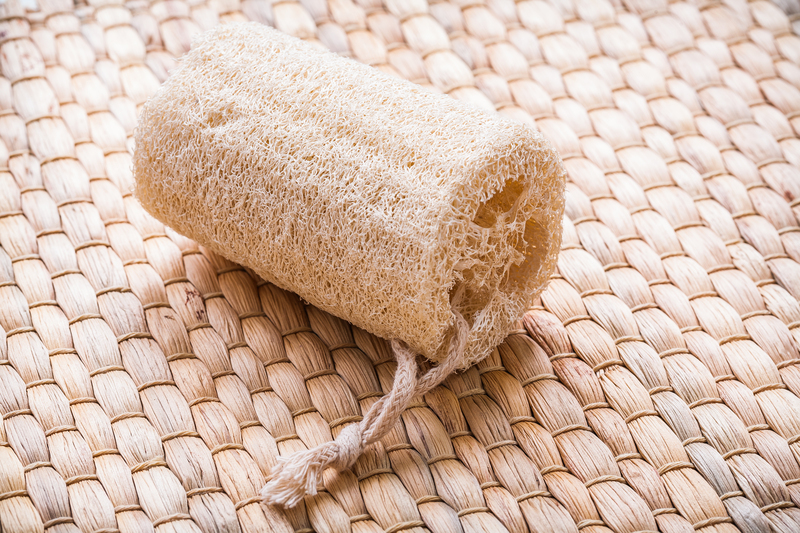Clear the Air: Boosting Health with Indoor Air Quality
Posted on 02/07/2025
Clear the Air: Boosting Health with Indoor Air Quality
Indoor air quality is more than just a comfort factor; it's essential for maintaining good health and overall well-being. While many of us consider air pollution an outdoor issue, scientific evidence shows that indoor air can be two to five times more polluted than the air outside. Since most people spend more than 90% of their time indoors, understanding and improving the air we breathe in our homes and workplaces is vital.
What is Indoor Air Quality?
Indoor air quality (IAQ) refers to the condition of the air inside buildings, as it relates to the health, comfort, and productivity of those people living or working within them. Good IAQ ensures that the air is free from harmful pollutants, toxins, and contaminants, promoting a healthier environment for everyone.
Why is Indoor Air Often Worse Than Outdoor Air?
Many factors contribute to poor IAQ. Inadequate ventilation, indoor sources of pollution, chemicals from cleaning agents, building materials, and even household furnishings can all release pollutants into the air. Over time, these contaminants build up indoors, especially in well-insulated modern buildings designed for energy efficiency. Without proper ventilation, the concentration of toxins increases, posing health risks.

Common Indoor Air Pollutants
- Volatile organic compounds (VOCs): Emitted from paints, varnishes, cleaning agents, and air fresheners.
- Particulate matter (PM): Dust, pet dander, pollen, and smoke can linger in household air.
- Mold and mildew: Caused by moisture and poor ventilation.
- Carbon monoxide (CO): A colorless, odorless gas from malfunctioning gas appliances or car exhausts in attached garages.
- Radon: A naturally occurring radioactive gas that seeps from the ground into buildings.
- Biological contaminants: Bacteria, viruses, and allergens from plants, humans, and pets.
The Health Consequences of Poor Indoor Air
Exposure to indoor air pollutants can cause immediate and long-term health problems.
Short-Term Effects of Low-Quality Indoor Air
- Eye, nose, and throat irritation
- Headaches and dizziness
- Fatigue and difficulty concentrating
- Allergic reactions such as sneezing and coughing
Long-Term Effects
- Respiratory diseases like asthma and chronic bronchitis
- Cardiovascular issues
- Cancer (especially from radon and certain chemicals)
- Weakened immune system
Vulnerable groups such as children, the elderly, and individuals with pre-existing health conditions are especially at risk.
How to Improve Indoor Air Quality at Home
Ensuring healthy indoor air is achievable with consistent habits and modern technology. Let's explore some effective strategies to optimize IAQ in your living space.
1. Boost Ventilation
One of the simplest ways to refresh indoor air is by increasing ventilation:
- Open windows and doors whenever weather permits.
- Use exhaust fans in kitchens and bathrooms to remove humidity and pollutants.
- Consider installing a mechanical ventilation system for a continuous supply of fresh air.
2. Eliminate or Reduce Pollutant Sources
Minimizing sources is foundational in any air quality improvement plan:
- Switch to non-toxic, low-VOC paints and cleaning products.
- Avoid smoking indoors and discourage burning candles or incense with artificial fragrances.
- Keep your home as clutter-free as possible to reduce dust accumulation.
3. Control Moisture and Prevent Mold
Excess moisture invites mold and dust mites, harming IAQ:
- Maintain indoor humidity between 30%-50%.
- Repair leaks immediately and use dehumidifiers in damp areas.
- Clean bathrooms and other moist areas regularly, ensuring proper ventilation.
4. Regular Cleaning
Dust, pollen, and pet dander can accumulate quickly:
- Vacuum carpets and rugs at least weekly with HEPA filters.
- Wash bedding, curtains, and pet bedding frequently.
- Mop floors and wipe surfaces using damp cloths to trap particles.
5. Use Air Purifiers
High-efficiency particulate air (HEPA) purifiers can trap tiny particles, providing immediate improvement in indoor air:
- Place air purifiers in heavily used rooms, such as bedrooms and living rooms.
- Consider models with activated carbon filters to remove odors and chemical pollutants.
6. Maintain Your HVAC System
Your heating, ventilation, and air conditioning (HVAC) system plays a crucial role in air quality:
- Replace or clean filters as recommended (often every 1-3 months).
- Have your system professionally inspected and serviced annually.
- Keep ducts clean and free from debris and mold.
Green Solutions: Plants and Natural Air Filters
Houseplants are not just decorative--they can naturally filter certain air pollutants. NASA's Clean Air Study highlighted several indoor plants effective at reducing VOCs from the air.
Best Indoor Plants for Cleaner Air
- Spider plant (Chlorophytum comosum): Absorbs formaldehyde and xylene.
- Snake plant (Sansevieria trifasciata): Removes toxins like benzene and formaldehyde.
- Peace lily (Spathiphyllum): Filters ammonia, benzene, and trichloroethylene.
- Bamboo palm: Great for filtering benzene and trichloroethylene while adding humidity.
Keep in mind, some plants can be toxic to pets or small children. Always check suitability before adding new plants to your environment.
Modern Technology: Smart Solutions for Better Air
Smart Air Quality Monitors
With the advent of smart technology, monitoring and controlling your home's air quality is easier than ever. Air quality monitors measure levels of pollutants like PM2.5, CO2, VOCs, and humidity, alerting you when air quality drops. Smart systems can even adjust purifiers and ventilation automatically based on real-time readings, making air quality maintenance seamless.
UV Light Air Purifiers
Ultraviolet (UV) technology destroys airborne pathogens like bacteria, viruses, and mold spores. Integrating UV purification with your HVAC or standalone air purifiers offers an extra layer of defense, especially important for those with allergies or respiratory issues.
Special Tips for Allergy and Asthma Management
If you or a family member suffers from allergies or asthma, indoor air quality should be a top priority. Here's how you can clear the air for better health:
- Encase mattresses and pillows with hypoallergenic covers to block dust mites.
- Keep pets out of bedrooms and bathe them regularly to reduce dander.
- Opt for hard flooring over carpets, as they collect fewer allergens.
- Ensure proper ventilation when cooking or using household chemicals.
- Change filters regularly in air purifiers and HVAC systems.
Boosting Productivity and Well-being Through Better Air
Studies show that improved indoor air quality can lead to increased mental alertness, productivity, and overall happiness. In workplaces and schools, better IAQ has been linked to fewer sick days, enhanced focus, and higher cognitive performance. Clean air fosters a healthier, more engaged community whether at home, at work, or in public spaces.
Clear the Air for Every Room
- Bedrooms: Use air purifiers, wash bedding weekly, and avoid synthetic fragrances.
- Kitchens: Vent appliances, use range hoods, and avoid harsh cleaning chemicals.
- Bathrooms: Keep moisture in check, fix leaks, and use mold-resistant materials.
- Living rooms: Declutter, keep plants, and vacuum upholstery regularly.
Recognizing Signs of Poor Indoor Air
Be vigilant for these warning signs that your home's air quality may be compromised:
- Persistent musty or unpleasant odors
- Frequent sneezing, coughing, or eye irritation indoors
- Visible mold growth or water stains
- Condensation on walls or windows
If you notice any of these, take steps to identify the source and improve ventilation immediately.

The Importance of Regular Maintenance
Maintaining healthy air in your home is a continuous process. Schedule regular checkups for your HVAC, clean air ducts, ensure exhaust fans are working, and stay on top of cleaning routines. Prevention is always better than cure, especially when protecting your family's health.
Conclusion: Clear the Air, Boost Your Health
Our indoor environment has a profound effect on our well-being. By making small changes--like ventilating often, using air purifiers, choosing natural cleaning products, and embracing green plants--we can dramatically improve our everyday air. Optimizing indoor air quality is a smart investment in your family's health, happiness, and future.
Remember, the journey to better air quality is ongoing. Stay informed, stay proactive, and breathe easy knowing that every improvement you make creates a safer, more vibrant space for yourself and your loved ones.
Ready to Clear the Air?
- Review your current indoor air practices
- Create a routine for maintenance and ventilation
- Invest in proper tools and technology
- Share tips with friends and family for healthier homes
Make indoor air quality a priority today--and unlock a healthier tomorrow!



